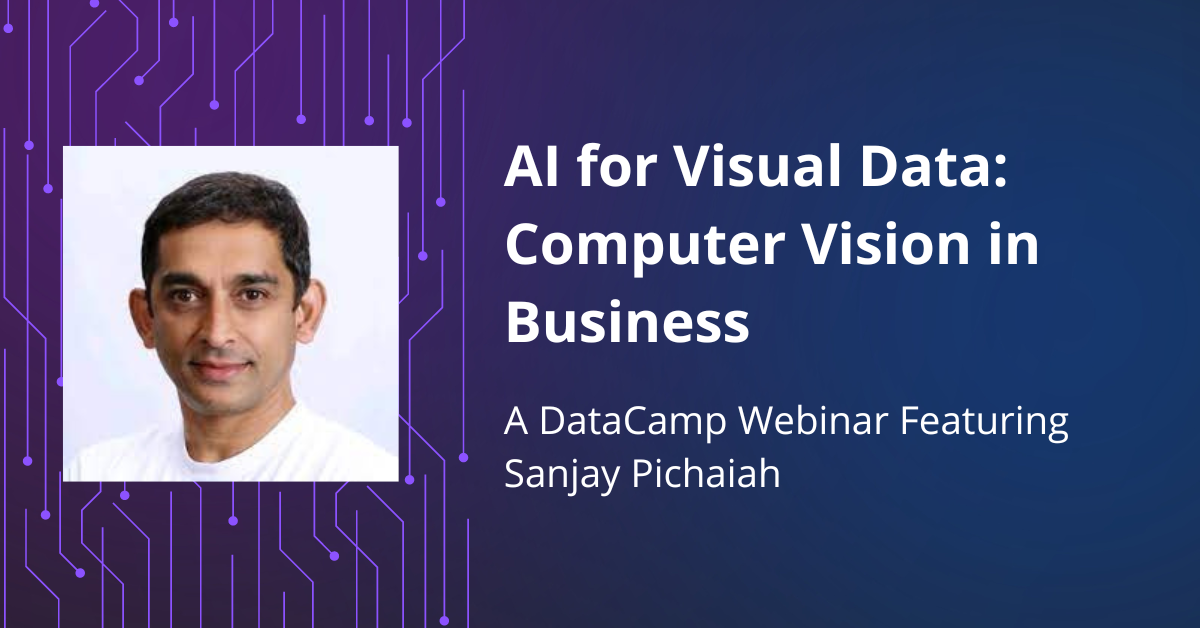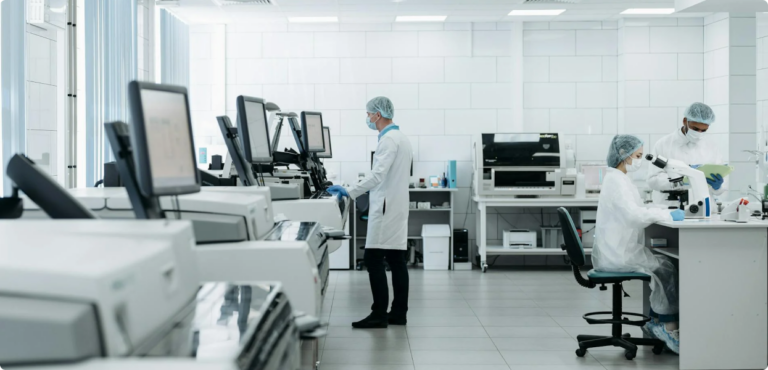Sanjay Pichaiah, Co-Founder & Vice President, Products & GTM, at Akridata, recently appeared as a guest on DataCamp’s webinar on the power of AI-powered Computer Vision tools in Business. This blog is a recap and introduction to Computer Vision and how it could help your business grow in 2024.
Until very recently, performing data science with image and video data was an incredibly difficult task. But now, advancement in AI-powered tools has allowed more organizations to extract value from visual data, an increasingly important need for businesses. That said, there are still many challenges and subtleties when it comes to working with visual data.
Who uses computer vision?
Computer vision is a form of AI that enables computers to capture, interpret, analyze, predict, and make decisions based on visual (photo and video) data. Computer vision is used across a wide range of fields including in facial recognition software, medical imaging and disease diagnosis, for self-driving vehicles, in security and surveillance, for manufacturing and quality control, retail, and even for agriculture and crop maintenance.
Computer vision is most frequently used for visual inspection, monitoring, and the creation of pictorial or video content that represents data interpretation. Computer vision is increasingly being used by organizations, and with the advancement of new tools, has been more available than ever before.
Getting Started with Computer Vision: Image Classification
One of the most common ways Computer Vision is used, and one of the best ways to get started with Computer Vision, is image classification. Image classification assigns a label or category to an input image, based on the visual content. Think: the videos from a traffic camera that are sorted and labeled by an automated AI tool trained to recognize the differences between cars, trucks, bikes, and pedestrians.
Image classification can be broken down into three simple steps: data collection and preparation, selecting model architecture (i.e. using an off-the-shelf model or building a custom model), and training the model with training datasets.
While image classification is one of the most ubiquitous tasks used by organizations, the task becomes more difficult if the data used for training is biased or messy.
The Common Challenges of Working with Visual Data and Computer Vision
One of the major challenges of incorporating Computer Vision into your business operations effectively is the sheer size and breadth of most visual data sets. Both static image and video data sets are often huge, which makes selecting data for model training difficult. For example, a company relying on cameras to capture a manufacturing process might end up with millions of pictures a day, but not all of those images are useful for training a model to detect a product flaw.
Image classification also increases in complexity with scale. All of the tasks associated with image classification, from storing the data somewhere accessible and searchable, to creating training datasets, to data labeling all become more challenging as datasets grow. And as we discussed, visual datasets are often enormous.
Another common data issue is the use of messy data to train your model. Messy data is false, incomplete, and duplicated. Unfortunately, messy data is often a result of a lack of resources and time to clean, comb through, and curate balanced datasets. Biased datasets can also inadvertently lead to class imbalance and skewed results.
Finally, there’s the challenge of maintaining data security and privacy, and the exorbitant cost often associated with storing and working with massive visual datasets. Unless you are a company that can afford to spend multiple millions of dollars in data storage and model training, your business will most likely have to reduce down to a small subset of data for model, which can also lead to bias.
What’s the best way to solve these common issues? By using modern, automated AI tools that work to clean up data as much as possible and eliminate bias before a Computer Vision model is used for data storage, sorting, labeling, and ultimately interpretation.
The Akridata Difference
Akridata is an AI-powered platform that helps visual data experts connect multiple data sources in order to easily explore, search, and analyze their visual data. Akridata also offers an image-based search to help sift through millions of images in seconds and point out model performance and inaccuracies.
Akridata is designed to help data scientists easily build a high-quality training set to send off to labeling to best support the training of models.
Learn More
If you’re ready to learn more about extracting value from visual data with modern AI tools, watch the full webinar here.




No Responses